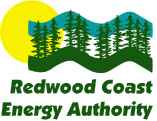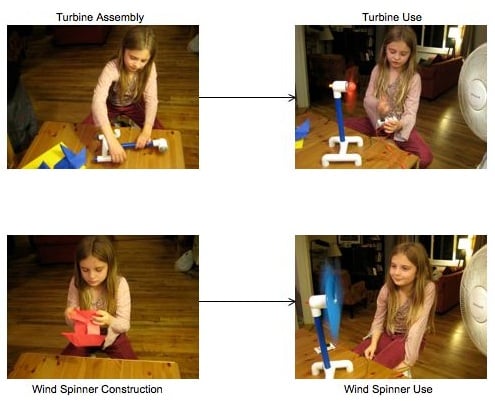Abstract

Client Background
The (RCEA) was formed in 2003 as a joint powers association, representing seven municipalities: Arcata, Bluelake, Eureka, Ferndale, Fortuna, Trinidad, and Rio Dell.
Mission Statement:
“The Redwwood Coast Energy Authority’s purpose is to develope and impliment sustainable energy initiatives that reduce energy demand, increase energy efficiency, and advance use of clean,efficient and renewable resources available in the region.”
Problem Analysis and Criteria
| Criteria | Weight | Description |
|---|---|---|
| Safety | 10 | Safety is the ability to prevent injury of any kind. The lesson must not be unsafe for children in the fourth grade. |
| Effectiveness | 10 | The lesson effectiveness is the extent to which students retain the lessons given material. Students must retain information on wind power. |
| Cost | 5 | The cost of the project must be under 400 dollars. The total cost is to be divided by five, 100 dollars from the RCEA and 75 dollars from each group member. |
| Durability | 8 | Durability is the ability of the project to sustain a functional state in a fourth grade classroom and in storage. |
| Aesthetics | 7 | Aesthetics is the projects level of visual appeal. The completed lesson plan’s contents must be visually appealing to the students. |
| Portability | 6 | The weight of the completed project must be an amount to which the teacher can easily maneuver the lesson box. |
| Maintainability | 6 | Maintainability of the project is defined as the total cost required to sustain the functionality of the project. The maintenance costs must be of a reasonable amount. |
Description of Final Project
The Power of Wind lesson is designed to educate fourth grade students on the basics of wind power. The students will be educated on how wind is created, and wind power generation of electricity. The Power of Wind lesson has four sections: a lecture introducing wind power, student configuration of a model wind farm, student construction of origami wind spinners, and several worksheets.
The instructor will begin the lesson by giving a 15-20 minute lesson on the basics of wind. The teacher will refer to the provided power point for the content of the lesson. The teacher will also be supplied with the book Wind Energy Basics by Paul Gipe to provide supplementary information.
Students will then be given the opportunity to create their own origami turbine blades from construction paper, as seen in figure --------. The students will experiment with their modified blades by observing rotational their velocity and measuring the power output of the generator.

Folding Instructional Video
http://www.youtube.com/watch
The instructor will then connect three turbines, as seen in Figure___, in series. This will model a wind farm. The wind farm will be attached to a board that can flash lights or play music when the power supply is sufficient (1.2 volts).

Turbine Assembly Video
http://www.youtube.com/watch
Lastly, the students will complete two worksheets designed to enhance their vocabulary. These vocabulary words are wind power related. The vocabulary words will be introduced to the students during the 15-20 minute instruction at the beginning of the lesson.
Costs
| Materials | Cost |
|---|---|
| Wind Farm | $88.72 |
| Instructional Book | $23.76 |
| Two Boxes | $22.00 |
| Foam Box Inserts | $10.83 |
| Cardstock Paper | $3.99 |
| Clear Tape | $0.99 |
| Voltage Ohm Meter | $6.50 |
| Pentel Erasers | $2.15 |
| 1" View Binder | $5.44 |
| Sheet Protectors | $3.99 |
| Foam Board | $6.29 |
| 8-Tab Dividers | $4.39 |
| Elmers Glue | $2.14 |
| Total | $181.78 |
